Pool chemistry can be one of the most confusing aspects of owning a swimming pool. Identifying which chemicals to add, how much, and in what order can be mind-boggling (let alone trying to resolve bad pool chemical combinations). Still, there are a few bad pool chemical combinations that pool owners should absolutely stay away from.
Additionally, there are chemicals you will need to add separately. In short, adding chemicals is a risky business, especially if you are a new pool owner.
In this article, we hope to shed light on bad chemical combinations and how to avoid making a mess in your pool.
Bad Pool Water Chemistry
Every pool owner knows that proper water chemistry is essential to having a healthy swimming pool. However, there are several different scenarios where poor water balance can negatively affect your pool.
You want to avoid these bad water combinations at all costs. The best way to determine your current chemical levels is to test your pool water.
High pH + High Calcium
If your pH and calcium levels are high, your pool is more prone to scale and cloud. Typically, you can see a thin film of scale on the surface of your pool and pipes. If left untreated, it can even form sharp crystallized calcium nodules.
Treatment
There is no simple chemical that you can add to your pool that will reduce calcium hardness. The only way to reduce calcium hardness levels in pool water is through dilution with water of lesser hardness.
However, it is possible to control your calcium levels to prevent scaling. The best way to minimize the effect of high calcium levels is by using a sequestering agent. Calcium is still present, but in a form that is less likely to cloud water or form scale if the pH or other factors get out of balance.

High pH+ Low Chlorine
This combination is the perfect condition for a cloudy pool and algal blooms. In fact, algae prefer water with a high pH. Once the pH gets too high, the algal blooms are simply waiting for your chlorine to deplete.
Treatment
Once your pH levels rise above 7.8, add a pH decreaser, an acid, to bring down the pH to prevent scale build-up. The correct dosing of this pH minus depends on the total water volume and the current pH level. If this doesn’t work, your alkalinity levels are too high and you need a stronger acid. A strong acid such as sulphuric acid or hydrochloric acid will be able to reduce the pH level.
For more information on how to lower your pH, click HERE.
Low pH + Low Alkalinity
If you are experiencing low pH and low alkalinity, you are also probably experiencing corrosion. This bad chemical combination causes both etching and corrosion to steel, copper, rubber, vinyl, and plaster surfaces. In short, it can ruin everything!
Low pH is great for algal prevention and ensures your chlorine’s efficiency. However, once the pH is too low, your water becomes acidic. It’s important that your pH levels do not drop below 7.0, or neutral.
Treatment
If your alkalinity levels are too low (below 80 ppm) and your pool is concrete, you will need to add an alkalinity increaser, a.k.a sodium bicarbonate. Be sure to carefully follow dosing instructions carefully, and increase the level gradually to the proper range of 80-120ppm.
However, if you own a fiberglass or vinyl pool, we recommend using dry acid.
Low pH + High Alkalinity
This combination is similar to the one above, however, once your alkalinity is high, it is harder to raise your pH levels. In a sense, the high alkalinity acts as a buffer or cushion for the pH.
Treatment
The only way to lower alkalinity is to physically remove some of the carbonates in the pool. The best way of removing the carbonates in the water is to aerate the water. Aeration will also increase this rate of outgassing. As the carbon dioxide outgases, the pH rises with no change in total alkalinity.
Add muriatic acid until the alkalinity level reaches about 90 to 100 ppm. Then, aerate until the pH rises to 7.4 – 7.6
Low Chlorine + Low Stabilizer (CYA)
If your pool registers for low chlorine and low stabilizer and you do not address it, you can expect the conditions to go from hazy to cloudy to green. Once you are more experienced with your pool, you will start to notice when your pool needs chlorine simply by looking at the color.
Treatment
To increase the CYA levels, we recommend adding a CYA stabilizer. This comes as a stand-alone product and is also included in some chlorine-based sanitizer products. Both dichlor and trichlor contain both chlorine AND CYA. However, once your CYA is stable, you shouldn’t have to add any more for a while.
High Chlorine + High Stabilizer
The combination of high chlorine and stabilizer results in damage to soft and shiny surfaces. This can include the interior of your pool, pool equipment, and pool liner. Stabilizer levels over 100 ppm can skew chlorine potency and also make chlorine testing unreliable.
Treatment
In order to lower your stabilizer, you will need to dilute your pool with fresh water. There is no chemical on the market that you can add to your pool water to lower the stabilizer. We do not recommend keeping your stabilizer levels higher than 50 ppm. At this concentration, you begin to notice the difference in how effective your chlorine is. Not to mention, you may also start to see algae at levels above 50 ppm. This is due to the negative effect on your free chlorine.
High Combined Chlorine
Combined chlorine is the chlorine that has minimal ability to sanitize but is still present in your pool. In a sense, you have already used that chlorine to sanitize. You measure the combined chlorine by subtracting your free chlorine levels from the combined chlorine levels (TC-FC=CC).
Treatment
When the chloramine levels exceed 0.3 ppm, shock your pool. It’s important that you add enough chlorine to reach your ‘breakpoint chlorination’. Raise the level of chlorine 10-20 times the level of your combined chlorine levels and hold steady for 4 hours. We do not recommend swimmers to re-enter the pool until your chlorine levels have dropped to 5 ppm or less.
Low Calcium Hardness
If your pool registers low for calcium hardness, it creates a corrosive water environment. This affects any pool equipment that comes into contact with your water, especially vinyl liners. It hinders overall water balance and chemical efficiency.
Treatment
To treat low calcium hardness levels in your pool, you can purchase a calcium hardness increaser. It’s very important to follow the instructions on the bottle carefully.
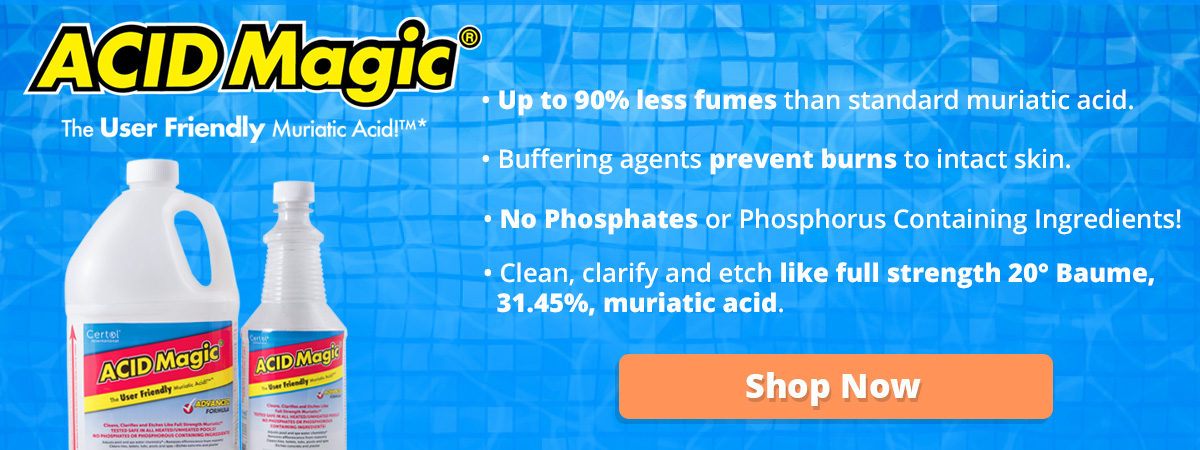
High Phosphates
Every pool contains phosphates. They enter your pool via many sources. However, once your phosphate levels exceed 300 ppb, we recommend using a phosphate remover (SeaKlear or PhosFree.) Both phosphates and nitrates are food for algal blooms.
Treatment
Before adding phosphate remover into your pool, make sure you actually need it. We do not recommend adding unnecessary chemicals to your pool. Remove phosphates from your pool when levels exceed 1000 ppb. Once your phosphate levels exceed 1000 ppb, I would consider purchasing a phosphate remover. Keep in mind though, phosphate remover will not rid your green pool.
You can find more information on phosphates in your swimming pool HERE.
Bad Pool Chemical Combinations
Every step of the balancing process requires pool owners to take precautionary measures for their safety. Some of the measures include knowing when to add chemicals and when not to.
Chlorine Shock + Algaecide
We do not recommend introducing chlorine shock and algaecide into your pool at the same time. The strength of chlorine shock will disturb the chemical elements in many pool algaecides. In some cases, it completely destroys the algaecide altogether.
We recommend using pool shock to treat your algae. Hold off on using your algaecide until your chlorine levels return to normal.
Chlorine Shock + Sequestering Agent
We do not recommend adding chlorine shock and any type of stain and scale chemicals. The strength of the chlorine shock renders the sequestering agents ineffective. Add your stain and scale chemicals a day before or several days after shocking your pool.
Clarifier + Clarifier
Is there such a thing as too much clarifier? Absolutely. Instead of acting as a coagulant, some clarifiers will become a dispersant. It is important to follow the instructions listed on the bottle. It’s usually a wise idea to wait a week between treatments.
VERY High Cyanuric Acid
When your CYA levels reach higher than 100 ppm, it becomes difficult to sanitize your pool properly. This happens because your CYA renders your chlorine useless. To get your levels stable again, we recommend a CYA reducer or diluting your pool.
Chlorine Shock + High Metals
Let’s say, for instance, your pH is too low causing your copper heat exchanger in your heater to erode. If you were then to shock your pool, you could end up with black streaks and stains in your pool. Remember, keep your pH, alkalinity, and calcium hardness levels within range. You will also need to add a sequestering agent like Stain Away or Metal Free to your pool.
Every pool is different. However, what doesn’t change is how chemicals react with one another. It’s very important to pay attention to the type of chemicals and the number of chemicals you are putting into the pool. Failure to do so can actually cause more harm than good.
If you have any questions about balancing your pool water, make sure to find us on our chat feature via our website.

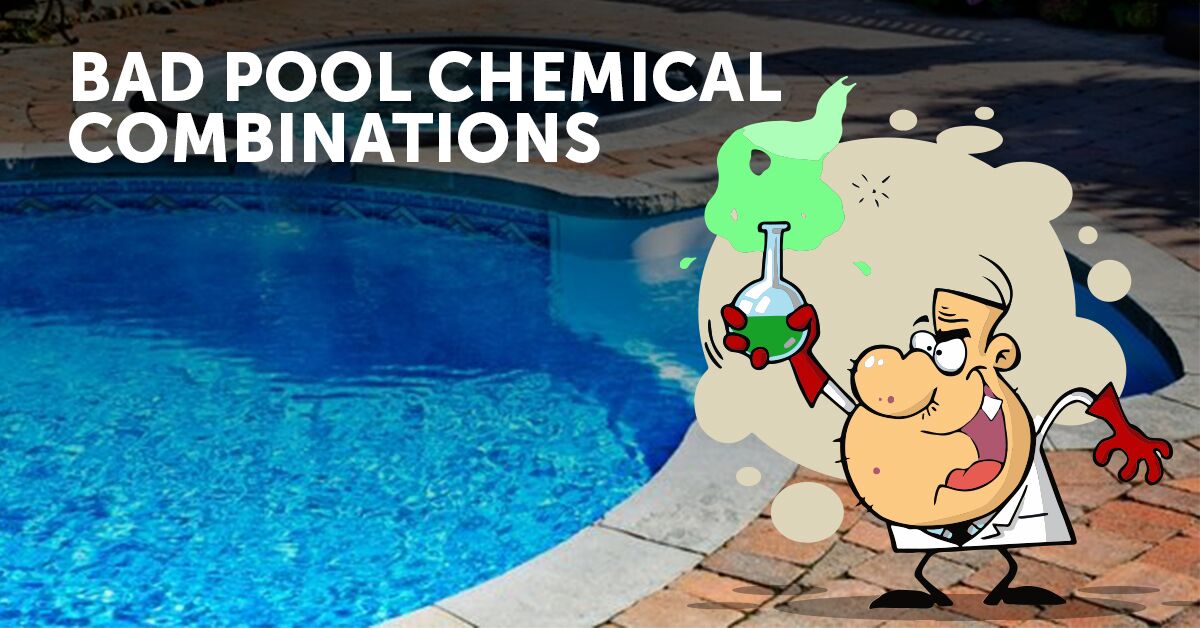
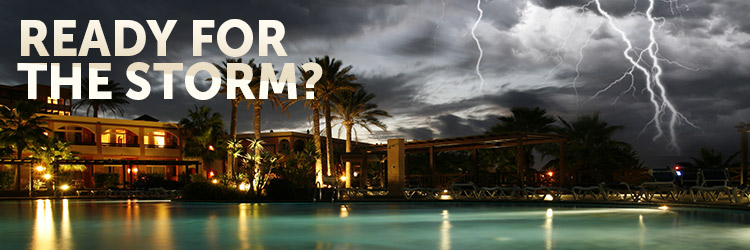
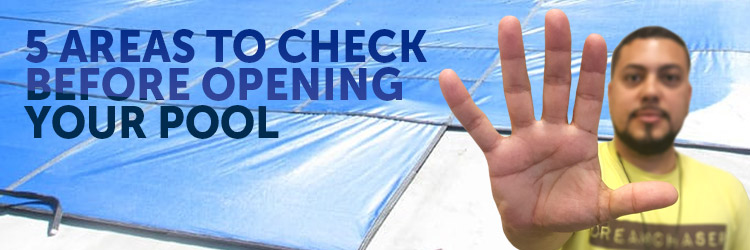
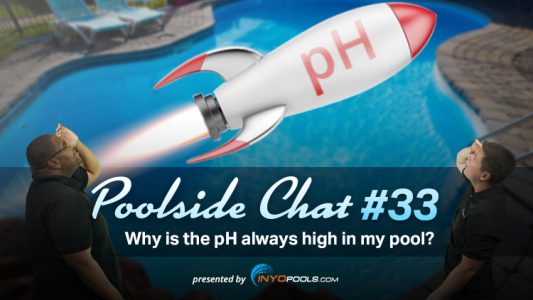
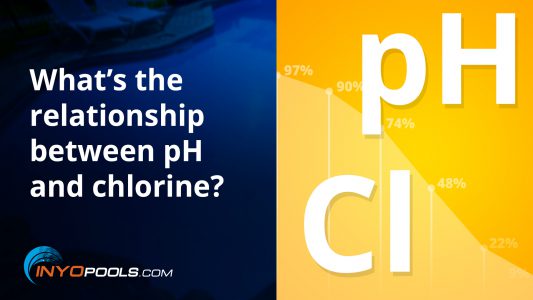






I’m getting bad scale ever since they re-plastered my pool. It’s forming white hard crystals along every line where they troweled the plaster in the pool, and even where they grouted on the outside of the spa. My water chemistry is balanced; I check it weekly at my local pool store. What can I do?
Help pls calcium hardness 5
Cyanuric acid 15
Copper 0.5
Phosphate 4000 we have a vinyl pool was told to add nophosphate turned water dark green
Your water chemistry is completely imbalanced. The calcium hardness is 145 ppm lower than it should be. The Cyanuric acid is about 15ppm ppm below it’s recommended minimum. I don’t know what your chlorine, ph, or alkalinity are, but it’s not good if they are anything like the rest of the readings. High phosphates are low on the list of worries.
Given the limited information, the dark green could just be algae. But I can only be sure with a full set of test results.
I’ve been battling bad stains lately and while working through identifying them (Jacks ID kit) I was told that some liquid chlorines (note: vinyl liner) actually bring out metals and may result in stains. Stains seemed to fade when I went back to tabs while I managed the rest of the chemistry, but I know I’ll need to get off tabs sooner or later. I re-added Blue Water liquid chlorine and stains began to come back the same day!! I’m ID’ing the stain (I’ve read that separate conversation thread), but any truth to the liquid chlorine ‘type’ issue, i.e. do I need to change liquids?? THANKS
I thought the same thing! Dry acid will lowered your pH.
Saw that too
My pool was showing 0 CYA. It felt like we were burning thru chlorine fairly fast. I’ve been in the house 3 years and had never added (nor tested) CYA prior. I added ~ 5 lbs of Cyanuric Acid. Tested a day later still showed 0. Added 3 more lbs. … for a total of 8 lbs. I ran the system for the recommended 24 hours. Still showed ~0. Used multiple test strips. I live in AZ and estimate the pool is around 13,000 gallons. All other measurements of chlorine, alkalinity, pH etc. are within range. Any guesses why the CYA isn’t registering? If it seems like we’re not using as much chlorine, do I assume the CYA is working but just not registering???
Use a pool testing kit instead of test strips.
You need to make sure your alkalinity is in range for CYA to register. Once you adjust alkalinity, your CYA will read.
My pool is about 10000 gls chlorine pool. I recently took out filter from pool and cleaned it well. Hardness 250ppm, total chlorine 1-3, free chlorine 0.5, ph 7.2, alkalinity 120, cuanuric 50ppm.
I get an algae dust almost daily. What do you recommend?
I also live in Miami FL.
Your free chlorine is low; shock the pool to get your chlorine higher. But if you have a standard tablet chlorinator up the dosage, or with salt increase the percentage of chlorine output.
If the water has been in circulation for years, drain it and change the water. You can’t remove the organic soup that accumulated over time, you just end up putting more and more expensive chemicals in.
I get that around April-May-June, a yellow-green film around the sides. I believe it is pollen falling from distant trees. I have never had cloudy water.
Running the pump a bit longer or turn up the speed a bit. Sounds like it’s just not getting enough circulation because all the numbers you posted are great.